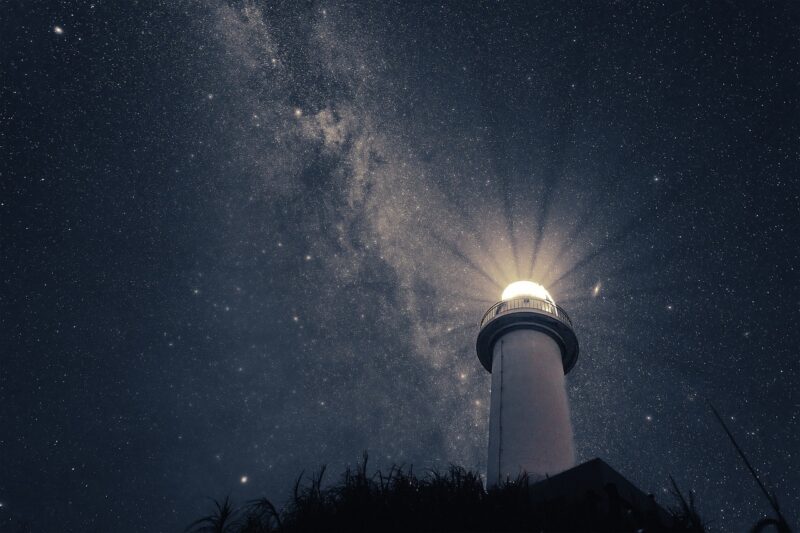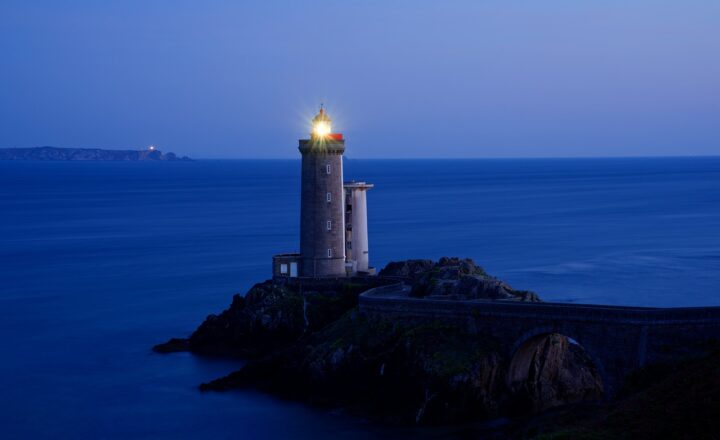
Lighthouses, the iconic beacons that have guided countless sailors to safety, are more than just structures; they are the embodiment of innovation, perseverance, and human endeavor. Each lighthouse has its story, intricately woven with the lives of the builders and the geographical significance they hold. In this article, we’ll explore some of the world’s most famous lighthouses, the visionaries that constructed them, and the tales that have made these monuments a captivating part of maritime history.
1. The Origins of Lighthouses
Lighthouses date back to ancient times, with the Lighthouse of Alexandria being one of the Seven Wonders of the Ancient World. Its beacon guided sailors safely into the harbor of Alexandria, Egypt, and demonstrated early maritime ingenuity. However, as the centuries progressed and maritime trade expanded, the need for more lighthouses became apparent. The structures evolved from simple fires on hillsides into sophisticated towers equipped with lenses and lights that could be seen for miles.
2. The Eddystone Lighthouse: A Testament to Resilience
Located off the coast of Cornwall, England, the Eddystone Lighthouse has a storied history dating back to the 17th century when ships frequently foundered on the treacherous rocks. The original lighthouse was designed by Henry Winstanley and was constructed in 1698. Unfortunately, it was destroyed by a storm in 1703. However, Winstanley returned to build a second lighthouse, which met a similar fate in 1709.
The third iteration was built by John Smeaton in 1756, renowned for its robust design — the first lighthouse in history to be constructed using interlocking granite blocks. His engineering prowess was not just a testament to his skills, but it also ensured the lighthouse withstood the elements for over 40 years. Today, the current Eddystone Lighthouse, built in 1882, stands strong and continues to guide vessels safely.
3. The Statue of Liberty of Lighthouses: The Portland Head Light
Rising majestically on the coast of Cape Elizabeth, Maine, the Portland Head Light is one of the most photographed lighthouses in America. Commissioned by George Washington and completed in 1791, it was built under the watchful eye of its original keeper, Joseph M. Garrison. The story of Portland Head Light is inseparable from its builders, who faced formidable challenges from the weather and the rocky landscape.
The lighthouse is notable not only for its beauty but also for its historical importance. It stands as a vital reminder of America’s early maritime history, guiding countless sailors through perilous waters. The lighthouse was automated in 1989, transitioning to a new era while continuing to serve as a symbol of safety and hope.
4. A Visionary’s Struggle: The Little Sable Point Lighthouse
Situated along the shores of Lake Michigan in Michigan, the Little Sable Point Lighthouse has a fascinating narrative reflecting the tenacity of its builder. Completed in 1874, this iconic structure was designed by the famous architect and lighthouse engineer, Orion S. Dorr. It served as a beacon for navigating the dangerous waters of Lake Michigan, which were known for their treacherous storms.
Despite the challenges posed by the location and the unwavering power of nature, Dorr’s lighthouse stood resolute for over a century. It was eventually decommissioned in 1954, with the light replaced by modern navigational techniques. Today, it’s a beloved historical landmark and an example of 19th-century lighthouse engineering and design.
5. The Iconic Cape Hatteras Lighthouse: A Saga of Survival
The Cape Hatteras Lighthouse, located on the Outer Banks of North Carolina, is perhaps one of the most recognized lighthouses in the United States. Standing at 210 feet, it was completed in 1870 and remains the tallest brick lighthouse in North America. Its unique black and white spiral design is known to sailors as “the big lighthouse.”
However, the story of Cape Hatteras Lighthouse is one of survival and ingenuity. As erosion threatened its stability, it was moved 2,900 feet inland in 1999, a monumental engineering feat that preserved its legacy for future generations. The lighthouse continues to be a critical navigational tool while serving as a national symbol of maritime strength and resilience.
6. The Historic Lighthouses of Italy: A Legacy of Timelessness
Italy’s coastline features some of the most picturesque lighthouses, such as the famous Lanterna in Genoa, built in the 12th century. The Lanterna has survived centuries of natural and man-made challenges, standing as a pivotal symbol for the city and serving as a guiding light for vessels navigating the busy port. Its architectural elegance and rich history illustrate the blend of function and artistry in lighthouse design.
Another notable Italian lighthouse is the Capo d’Otranto Lighthouse, which marks the easternmost point of Italy and provides breathtaking views of the Adriatic Sea. These monuments reflect the Italian blend of historical significance, beauty, and maritime culture, captivating visitors with their charm and historic tales.
7. Conclusion: The Legacy of Lighthouses and Their Builders
Lighthouses are more than just structures; they embody our history and the tales of those who built them. The commitment, bravery, and engineering brilliance of individuals like John Smeaton and Orion S. Dorr have ensured that these towers continue to stand tall against the test of time.
As we gaze upon these timeless landmarks, let us remember the stories of the builders behind them — the visionaries who dared to illuminate the path for others, carving their legacies into the very fabric of maritime history. Even as technology has changed the way we navigate our waters, the enduring symbol of lighthouses remains ever powerful, lighting the way for sailors and dreamers alike.
With every lighthouse standing strong against the waves, we are reminded of the human spirit’s unwavering resilience and determination. In a way, each lighthouse is a testament to progress, perseverance, and protection — a beacon that will forever shine bright along our shorelines.






